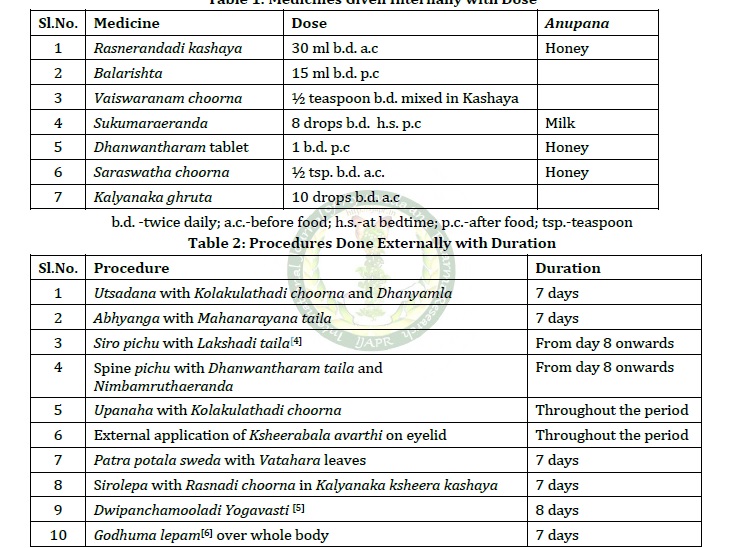Case Study of Ayurvedic Management of Spastic Cerebral Palsy
Abstract
Cerebral palsy is a group of permanent, non-progressive motor impairment syndromes secondary to lesions or anomalies of the brain arising in the early stages of its development. It has a high prevalence rate of 2- 3 per 1000 children. Among the various types, spastic cerebral palsy remains the most common, affecting about 61% of all people with cerebral palsy. In Ayurveda, this could be taken as a Vata predominant condition and included as Sarvangavata. Vatavyadhi treatment like Snehana, Swedana, Shodana and Brimhana, along with supportive therapies could give wonderful results.
An 8 ½-year-old boy, a known case of post meningeal hydrocephalus with spastic cerebral palsy was treated in the In-Patient Department of Government Ayurveda College, Thiruvananthapuram. He was treated based on the principle of Vatavyadhi chikitsa with various Ayurvedic medicines internally and appropriate Panchakarma procedures, along with physiotherapy and speech therapy. He has been assessed before and after the treatment using the Modified Ashworth Scale and Barthel Index, and noticeable improvement has been got. Here spastic cerebral palsy was managed solely using Ayurveda medicines, the apt Panchakarma procedures and supportive therapies. Significant improvements in the quality of life of the child was seen. Ayurveda treatments along with supportive therapies are highly effective in managing spastic cerebral palsy, thereby imparting a better standard of living.
Downloads

Copyright (c) 2023 International Journal of Ayurveda and Pharma Research

This work is licensed under a Creative Commons Attribution-NonCommercial-ShareAlike 4.0 International License.






